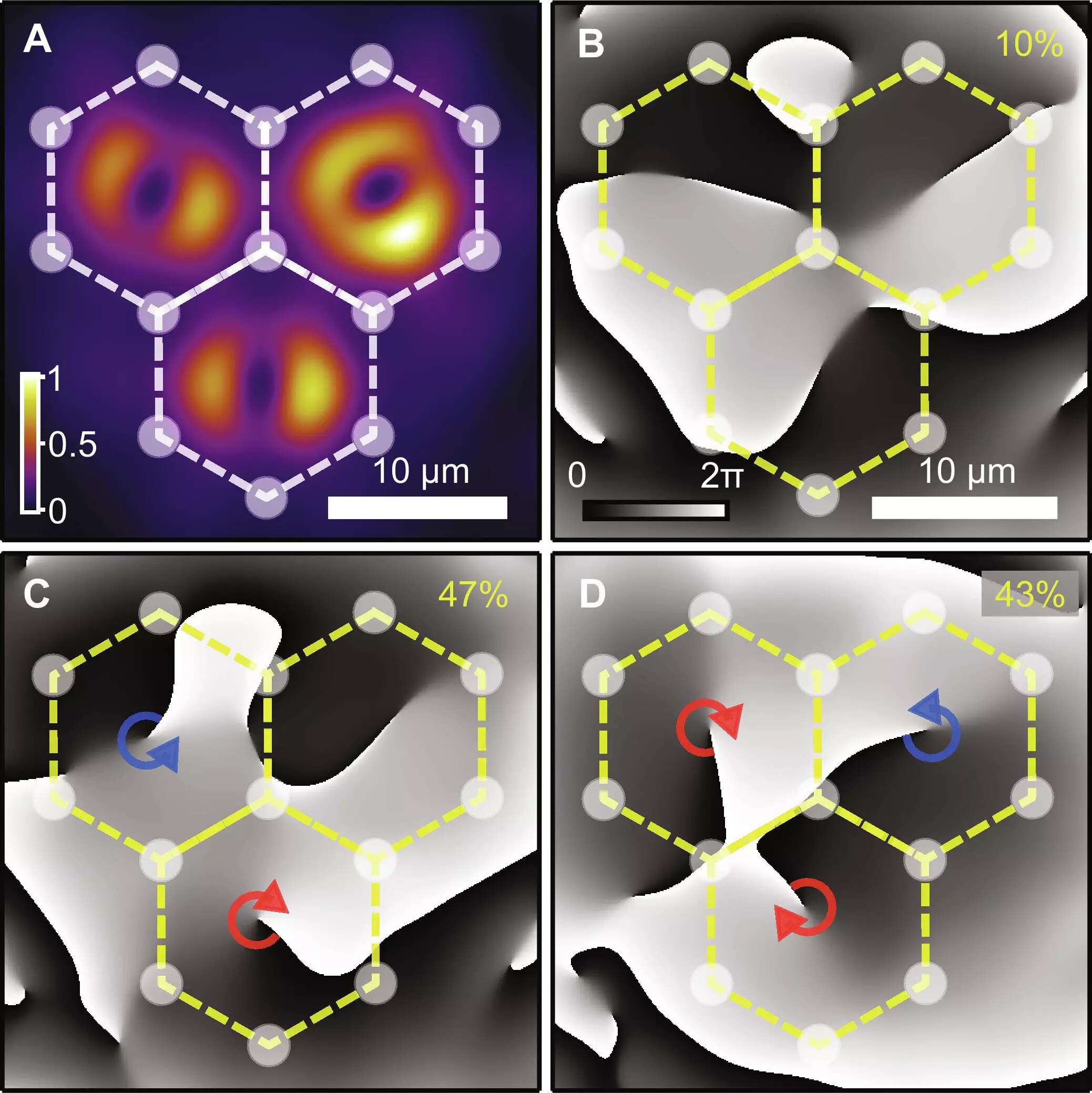The study conducted by researchers from Skoltech, Universitat Politècnica de València, Institute of Spectroscopy of RAS, University of Warsaw, and University of Iceland has shed light on the spontaneous formation and synchronization of multiple quantum vortices in optically excited semiconductor microcavities. The demonstration of polariton quantum vortices in neighboring cells of optically generated lattices with an opposite topological vortex charge reveals intriguing antiferromagnetic coupling properties.
The researchers at Skoltech conducted experiments in the Photonics Center’s Hybrid Photonics Laboratory to understand the dynamics of quantum vortices in exciton-polariton systems within semiconductor planar microcavities. By using a patterned laser beam through spatial light modulation, the team was able to create a triangular lattice with 22 cells, each containing trapped polariton condensates with a single-charge vortex.
Through the manipulation of lattice parameters and critical excitation power, the researchers observed the condensation of polaritons within the lattice cells. They discovered that while within a single cell, the vortex states were equally probable, in neighboring cell pairs, the vortices formed stable solutions with opposite topological charges. This phenomenon of vortex-antivortex pairing provided valuable insights into the behavior of these quantum entities.
One of the significant challenges encountered during the study was the statistical analysis of the extensive experimental dataset to validate the claims made by the researchers. This necessitated a thorough examination of the vortex charge and correlations with the low-energy configurations of the Ising spin Hamiltonian. The team, led by Professor Pavlos Lagoudakis, along with theoretician Dr. Helgi Sigurðsson, was able to confirm the presence of extended antiferromagnetic order in the triangular lattice of vortices, thereby further establishing the unique properties of these quantum structures.
The demonstration of spontaneous formation and synchronization of quantum vortices in semiconductor microcavities opens up new avenues for exploring the behavior of polariton quantum vortices and their potential applications in simulating condensed matter systems. The findings of this study not only contribute to the understanding of quantum phenomena but also pave the way for advancements in quantum technologies based on optically excited semiconductor microcavities.
The research conducted by the collaborative team highlighted the fascinating interactions and properties of quantum vortices in semiconductor microcavities, providing a deeper understanding of these complex quantum entities. By leveraging optical excitation techniques and sophisticated experimental setups, the researchers navigated through challenges to uncover the synchronized behavior of polariton quantum vortices in structured lattices, showcasing the potential of these systems for future quantum research and technological innovations.


Leave a Reply